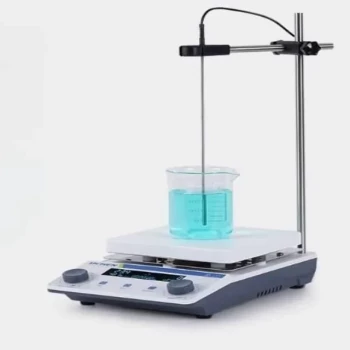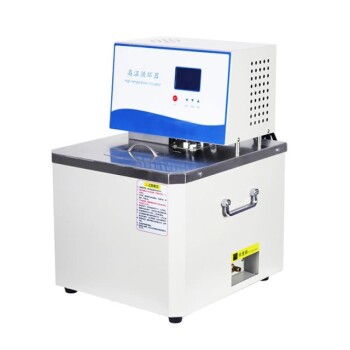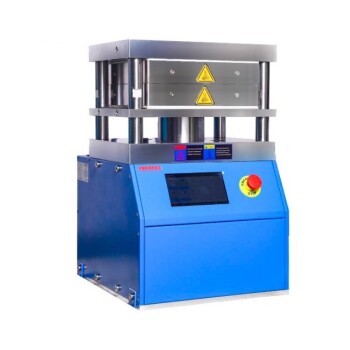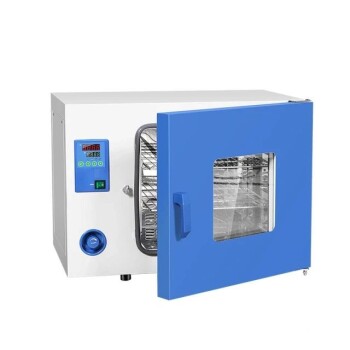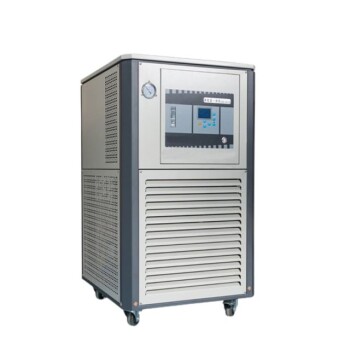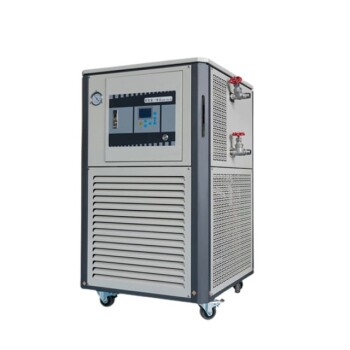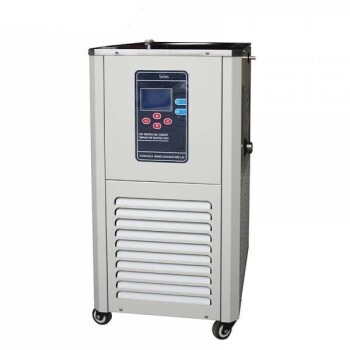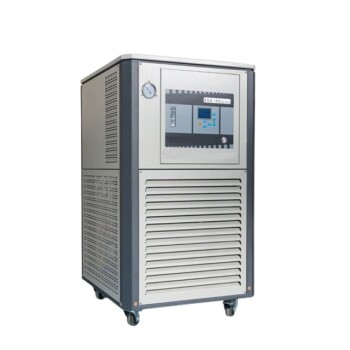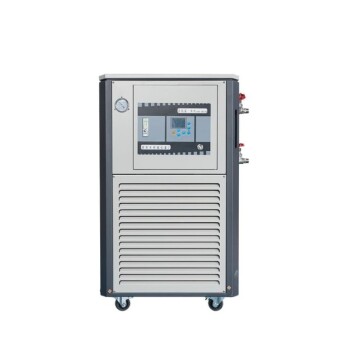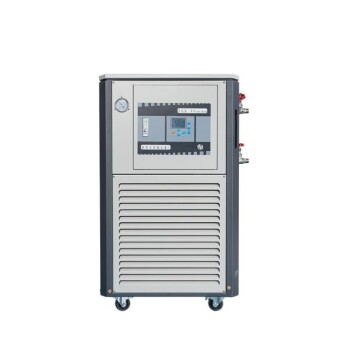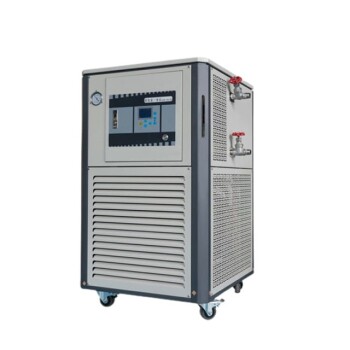Introduction to High-Temperature Heating Equipment
Common Types of Heating Equipment
In laboratory settings, high-temperature heating equipment is indispensable for various scientific processes. These devices are designed to facilitate precise temperature control and ensure the successful completion of experiments. The most commonly used high-temperature heating equipment in laboratories includes:
-
High-Temperature Tube Furnaces: These furnaces are designed to reach extreme temperatures, often used for high-temperature synthesis and sintering processes. They are equipped with temperature control systems to maintain precise heating conditions.
-
Muffle Furnaces: Muffle furnaces are essential for applications requiring uniform heating, such as sample ashing and heat treatment. They are characterized by their enclosed design, which minimizes heat loss and ensures even temperature distribution.
-
Ovens: Laboratory ovens are versatile tools used for drying, sterilizing, and baking. They come in various sizes and temperature ranges, catering to different experimental needs.
-
Water Baths: Electrothermal constant temperature water baths are crucial for maintaining a stable temperature in liquids. They are commonly used in biochemical experiments and sample preparation.
-
Oil Baths: Electrothermal thermostatic oil baths provide a stable heat source for processes requiring higher temperatures than water baths can offer. They are used in applications such as polymerization and solvent recovery.
Each of these pieces of equipment plays a unique role in the laboratory, contributing to the accuracy and efficiency of scientific research and experimentation.
General Safety Precautions
Ensuring the safe use of high-temperature equipment in laboratories involves a multi-faceted approach that encompasses standardized operations, personal safety protection, and maintaining a secure laboratory environment.
Standardized Operations
Standardized procedures are the backbone of safe laboratory practices. These protocols ensure consistency and reduce the likelihood of human error. They include:
- Training and Certification: Regular training sessions for all personnel using high-temperature equipment.
- Operational Checklists: Implementing checklists to verify that all steps are followed correctly.
- Documentation: Keeping detailed records of equipment usage and maintenance.
Personal Safety Protection
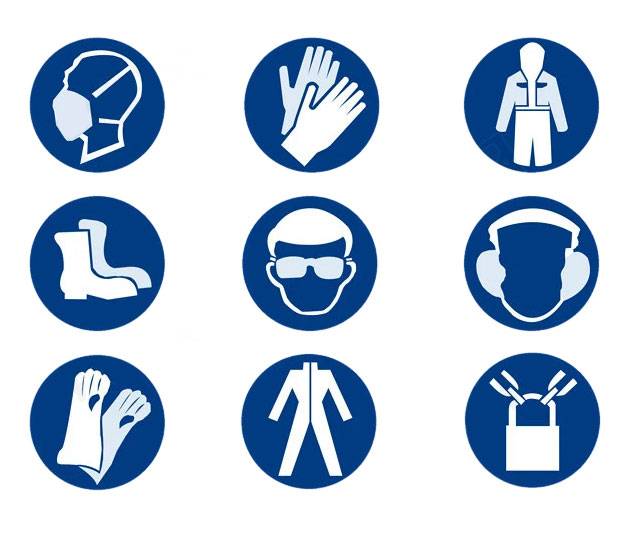
Personal protective equipment (PPE) is essential to safeguard individuals from potential hazards. This includes:
- Heat-Resistant Gloves: To protect hands from burns.
- Fire-Resistant Clothing: To minimize injury from accidental exposure to high temperatures.
- Face Shields: To protect the face and eyes from splashes and radiation.
Safe Laboratory Environment
Creating a safe laboratory environment involves several key measures:
- Ventilation Systems: Ensuring adequate ventilation to disperse heat and fumes.
- Fire Safety Measures: Installing fire extinguishers and ensuring easy access to emergency exits.
- Proximity Rules: Keeping flammable materials away from high-temperature equipment.
By adhering to these comprehensive safety measures, laboratories can significantly reduce the risk of accidents and ensure a safer working environment for all personnel.
Specific Heating Equipment Safety Guidelines
Electrothermal Constant Temperature Water Bath
When operating an electrothermal constant temperature water bath, several critical steps and precautions must be adhered to ensure both safety and efficiency. First and foremost, maintaining the correct water level is paramount. The water level should be checked regularly to ensure it remains within the recommended range, as insufficient water can lead to overheating and potential damage to the equipment. Conversely, overfilling can cause an overflow, leading to electrical hazards and damage to the laboratory environment.
To prevent overflow, it is advisable to use a water bath with a built-in overflow protection system. This feature automatically shuts off the power if the water level exceeds a safe threshold, thereby preventing any spillage and potential accidents. Additionally, always ensure that the water bath is placed on a stable surface to avoid tipping and subsequent spillage.
Temperature control is another crucial aspect of using an electrothermal constant temperature water bath. The equipment should be programmed to maintain a steady temperature within the desired range. Sudden temperature fluctuations can be detrimental to both the experimental outcomes and the longevity of the equipment. It is recommended to use a digital temperature controller with precise calibration to ensure accurate temperature readings and control.
Furthermore, periodic maintenance checks are essential to keep the water bath functioning optimally. This includes cleaning the interior to remove any residue that could affect temperature uniformity and checking the heating elements for any signs of wear or damage. Regular maintenance not only enhances the safety of the equipment but also extends its operational lifespan.
In summary, by adhering to these detailed instructions and precautions, users can ensure the safe and effective operation of an electrothermal constant temperature water bath, thereby contributing to a secure and productive laboratory environment.
Electrothermal Thermostatic Oil Bath
When using an electrothermal thermostatic oil bath, safety should be the foremost consideration. The selection of the appropriate oil is critical to prevent overheating and potential fires. Synthetic oils are generally preferred over mineral oils due to their higher flash points and better thermal stability. However, it is essential to consult the manufacturer's specifications to ensure compatibility with the specific model of the oil bath.
Maintaining the correct liquid level in the oil bath is another key safety measure. Overfilling can lead to spillage, while underfilling can cause the heating elements to overheat and potentially damage the equipment. Regular checks should be conducted to ensure the oil level remains within the recommended range.
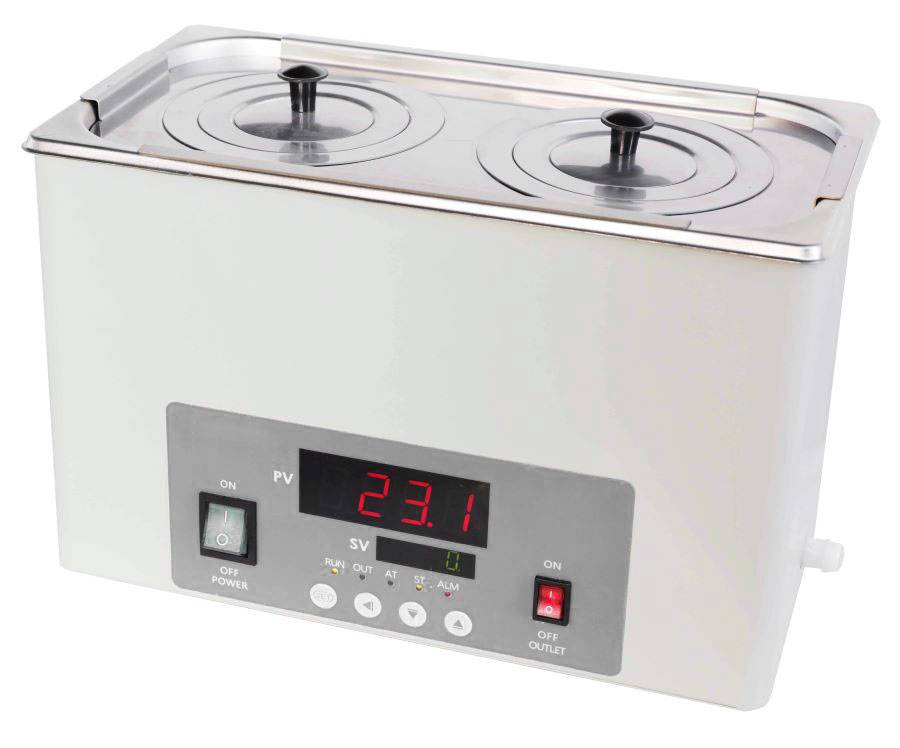
Flammable substances should be strictly avoided in the vicinity of the oil bath. This includes not only the oil bath itself but also the surrounding workspace. Any spillage of flammable liquids near the oil bath can create a significant fire hazard. Additionally, ensure that the oil bath is placed on a stable, non-flammable surface to minimize the risk of accidents.
To further enhance safety, it is advisable to use the oil bath in a well-ventilated area. Proper ventilation helps dissipate heat and reduces the risk of overheating. Always follow the manufacturer's guidelines for operation and maintenance to ensure the longevity and safety of the equipment.
High-Temperature Tube Furnace
When operating high-temperature tube furnaces, safety should always be the top priority. One of the most critical safety measures is to avoid rapid cooling. Sudden temperature changes can cause thermal shock, leading to cracks or even catastrophic failures in the furnace components. This is particularly important for furnaces with advanced heating elements like molybdenum disilicide (MoSi2), which can operate at temperatures up to 1800 °C but are sensitive to thermal fluctuations.
Proper ventilation is another essential aspect of safe furnace operation. High-temperature processes can generate toxic fumes or gases, especially when dealing with certain materials. Ensuring that the laboratory is well-ventilated helps to dissipate these harmful emissions and maintain a safe working environment. Additionally, maintaining a clean and uncluttered workspace around the furnace reduces the risk of accidental fires or other hazards.
Regular maintenance checks are crucial to ensure the longevity and safety of the furnace. These checks should include verifying the integrity of the heating elements, inspecting the insulation for any signs of wear or damage, and ensuring that all safety features, such as temperature controllers and emergency shut-off mechanisms, are functioning correctly. Regular maintenance not only prevents unexpected breakdowns but also ensures that the furnace operates efficiently and safely.
For those working in oxidizing or abrasive environments, the use of an optional muffle tube can be beneficial. These tubes are designed to withstand harsh conditions up to 1750°C, providing an additional layer of protection against potential hazards.
In summary, by adhering to these safety measures—avoiding rapid cooling, ensuring proper ventilation, and conducting regular maintenance checks—you can significantly reduce the risks associated with operating high-temperature tube furnaces.
Muffle Furnace
When operating a muffle furnace, several critical safety precautions must be adhered to ensure both equipment longevity and user safety. The muffle furnace, a highly insulated chamber capable of reaching temperatures up to 1100 °C, is designed to isolate materials from direct flame, making it ideal for precise high-temperature testing and sterilization. However, this high-temperature environment necessitates stringent safety measures.
Firstly, controlling the heating speed is paramount. Rapid temperature changes can cause thermal stress, potentially leading to equipment failure or, worse, a safety hazard. Gradual heating allows the materials inside the furnace to acclimate to the temperature changes, reducing the risk of cracking or explosion.
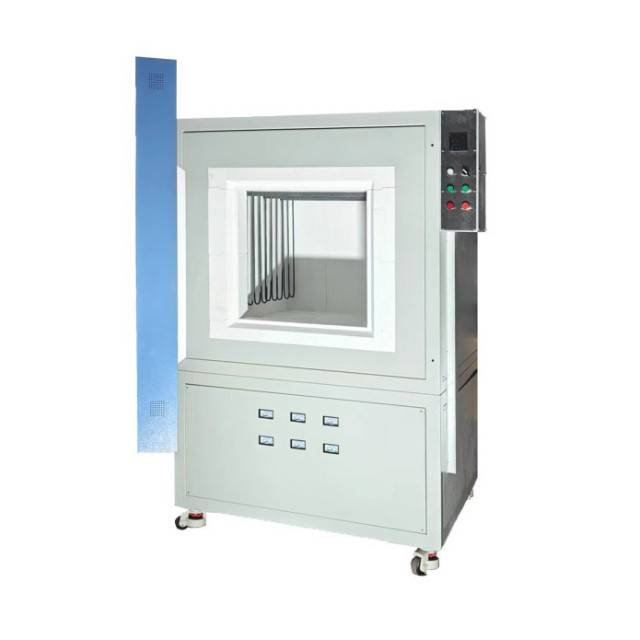
Avoiding prolonged high-temperature use is another essential precaution. Extended exposure to extreme temperatures can degrade the furnace's insulation and structural integrity, posing a risk of malfunction or fire. Regular monitoring and scheduling shorter, controlled heating sessions can mitigate this risk.
Proper cooling procedures are equally vital. Improper cooling can lead to thermal shock, damaging both the furnace and the materials inside. Allowing the furnace to cool naturally, rather than forcing it with external cooling methods, ensures a safe and gradual temperature reduction.
Additionally, users must be aware of the location of the thermocouple, which monitors the internal temperature. Ensuring its proper placement and function is crucial for accurate temperature control. Furthermore, knowing the melting point of the materials being processed helps in setting appropriate temperature limits, preventing accidental melting or combustion.
Safety gear is non-negotiable when working with muffle furnaces. Protective gloves and eyewear should be worn to shield against radiant heat and potential splashes. The type of gloves chosen should be appropriate for the temperatures involved, with options typically available in the drawer below the furnace.
In summary, while muffle furnaces offer a controlled environment for high-temperature applications, their use requires careful adherence to safety protocols. By controlling heating speeds, avoiding prolonged high-temperature exposure, and implementing proper cooling procedures, users can ensure both the integrity of their equipment and their personal safety.
Ovens
When using ovens in laboratory settings, safety should always be the top priority. Here are some essential safety tips to ensure both equipment longevity and personnel safety:
-
Placement in Dry, Well-Ventilated Areas:
- Ovens should be installed in areas free from moisture to prevent electrical malfunctions and potential short circuits.
- Adequate ventilation is crucial to dissipate heat and prevent the buildup of flammable gases, which could lead to explosions or fires.
-
Ensuring Proper Electrical Connections:
- Regularly inspect the electrical connections to ensure they are secure and free from corrosion.
- Use appropriate voltage and ensure the oven is grounded to prevent electrical shocks and equipment damage.
-
Avoiding Flammable Materials Inside:
- Never place flammable substances inside the oven, as this can lead to dangerous fires.
- Ensure that any materials placed inside the oven are non-flammable and can withstand the intended temperature range.
-
Regular Maintenance and Inspection:
- Schedule periodic maintenance checks to identify and rectify any potential issues before they escalate.
- Keep a maintenance log to track the condition of the oven and any repairs or replacements made.
By adhering to these guidelines, you can significantly reduce the risk of accidents and ensure the safe operation of ovens in your laboratory.
Alcohol Lamp
When using alcohol lamps in the laboratory, safety should always be the top priority. Here are some essential guidelines to ensure your operations are both effective and secure:
-
Proper Alcohol Levels: Always ensure that the alcohol lamp is filled to the appropriate level. Overfilling can lead to spillage and potential fire hazards, while underfilling can cause the lamp to burn inefficiently or extinguish unexpectedly. Refer to the manufacturer's guidelines for specific fill levels.
-
Avoiding Direct Contact with Flames: Never touch the flame directly with your hands or any other part of your body. Alcohol flames, while seemingly small, can cause significant burns. Additionally, avoid placing flammable materials near the flame to prevent accidental ignition.
-
Handling Spillages: In the event of an alcohol spill, act swiftly and cautiously. Immediately extinguish the flame to avoid any potential fire. Clean up the spillage using appropriate absorbent materials and dispose of them safely. Ensure the area is well-ventilated to dissipate any remaining vapors.
-
Flame Management: Regularly check the condition of the wick and replace it if it appears frayed or damaged. A well-maintained wick ensures a stable and controlled flame, reducing the risk of flare-ups or unexpected extinguishments.
-
Storage and Handling: Store alcohol lamps in a secure, upright position and away from any sources of ignition. Ensure that the alcohol used is of high purity and free from contaminants that could affect the lamp's performance or pose additional safety risks.
By adhering to these guidelines, you can effectively utilize alcohol lamps in your laboratory while minimizing potential hazards.
Management and Hidden Danger Identification
Heating Equipment Management Requirements
Effective management of heating equipment is essential to ensure both operational efficiency and safety in laboratory settings. This involves adhering to stringent regulations and implementing best practices across several key areas: placement, maintenance, and safety procedures.
Placement
The location of heating equipment within a laboratory is a critical factor in preventing accidents. Equipment should be placed in well-ventilated areas to allow for the dissipation of heat and to minimize the risk of overheating. Additionally, it is crucial to ensure that heating devices are positioned away from flammable materials and other potential hazards. Proper placement not only enhances safety but also facilitates easier access for routine maintenance and inspections.

Maintenance
Regular maintenance is indispensable for the longevity and safe operation of heating equipment. This includes routine checks for wear and tear, ensuring that all components are functioning correctly, and replacing any parts that show signs of damage or degradation. Scheduled maintenance helps to identify and rectify potential issues before they escalate into more significant problems. It is also advisable to keep detailed records of all maintenance activities to monitor the equipment's condition over time.
Safety Procedures
Adhering to established safety procedures is paramount when dealing with high-temperature heating equipment. This involves training laboratory personnel on the correct use of the equipment, including how to operate it safely and what to do in case of an emergency. Safety protocols should also include the use of personal protective equipment (PPE), such as heat-resistant gloves and face shields, to protect against burns and other injuries. Furthermore, it is important to establish clear guidelines for the supervision of equipment use, particularly when handling hazardous materials or operating at high temperatures.
By following these comprehensive management requirements, laboratories can significantly reduce the risk of accidents and ensure the safe and efficient operation of their heating equipment.
Common Hidden Risks of Heating Equipment
When it comes to heating equipment in laboratories, identifying potential hazards is crucial to maintaining a safe environment. One of the most common risks is the proximity to flammable materials. Heating devices, such as ovens and furnaces, generate high temperatures that can easily ignite nearby combustible substances. Ensuring that these materials are stored at a safe distance or in fire-resistant cabinets is essential.
Another significant risk is the lack of warning signs. Many accidents occur because users are unaware of the hazards associated with the equipment. Installing clear and visible warning signs near heating devices can significantly reduce the likelihood of accidents. These signs should indicate the maximum safe operating temperature, the presence of high voltage, and the need for personal protective equipment (PPE).
Unattended usage is also a major concern. Leaving heating equipment running without supervision can lead to overheating, fires, or other dangerous situations. Implementing strict protocols that require users to monitor the equipment continuously or to set timers and alarms can mitigate this risk. Additionally, ensuring that all users are trained on the proper operation and risks associated with the equipment is vital.
To summarize, the hidden risks of heating equipment include proximity to flammable materials, lack of warning signs, and unattended usage. Addressing these risks through proper management, clear signage, and continuous monitoring can significantly enhance laboratory safety.
Related Products
- Laboratory Small Constant Temperature Heated Magnetic Stirrer Heater and Stirrer
- 1200℃ Muffle Furnace Oven for Laboratory
- 1800℃ Muffle Oven Furnace for Laboratory
- 1400℃ Laboratory Quartz Tube Furnace with Alumina Tube Tubular Furnace
- 1400℃ Muffle Oven Furnace for Laboratory

